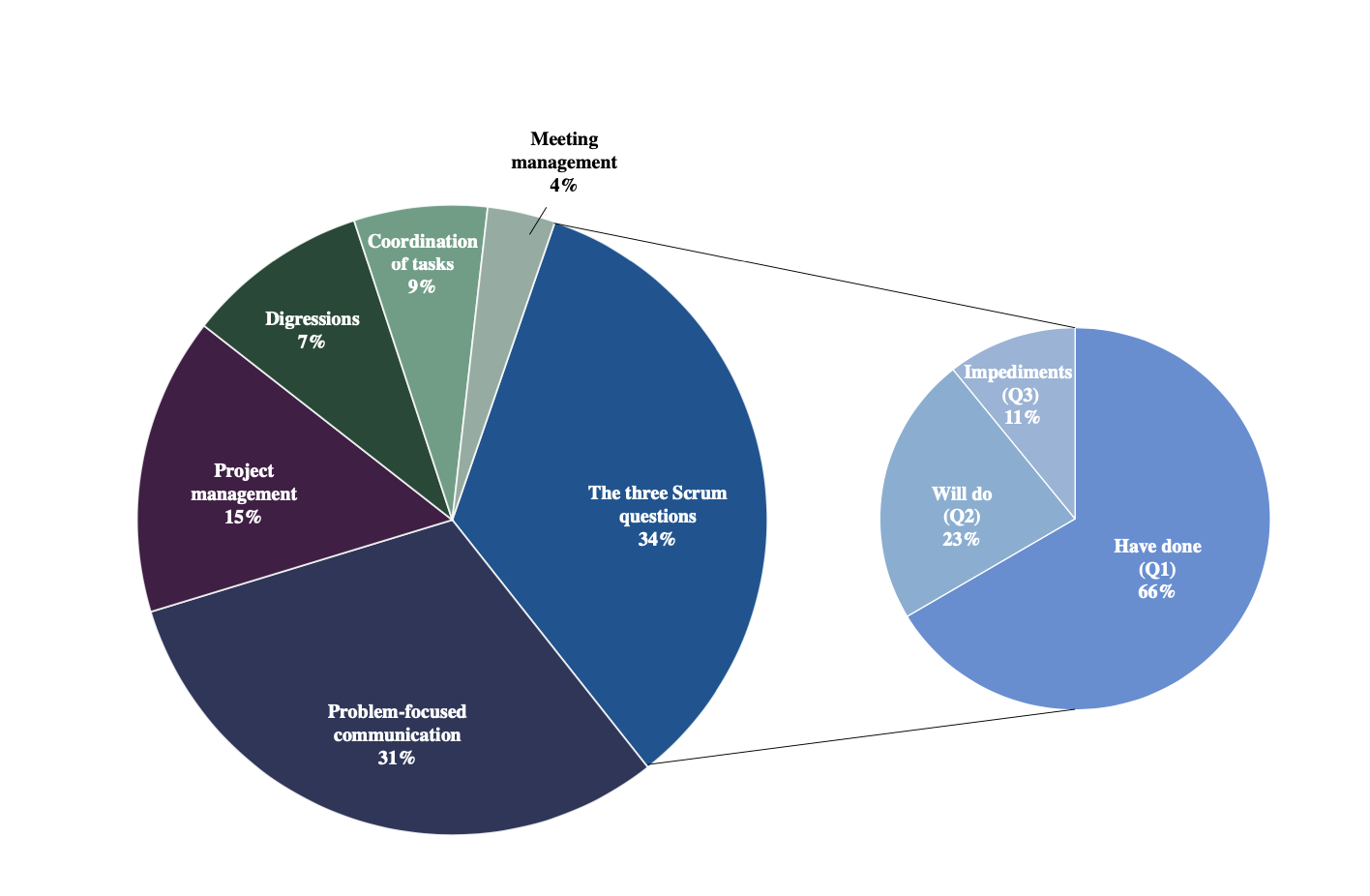Summary
A group of researches who’ve studied the daily standup for over a decade summarize their research and provide recommendations for how to make standups more valuable.
Source
https://arxiv.org/abs/1808.07650
Authors
You are probably familiar with the daily standup. You might like it, or hate it. The authors have been researching daily standup meetings for over a decade and have learned a few things they can share.
Despite clear guidelines for daily stand-ups, after the author’s extensive observations, they have seen that its difficult to implement in a valuable way for everyone. To understand what’s going on, It’s also not enough to look only at the team, you have to understand the context they are operating in. So, the authors undertook multiple-case studies to provide recommendations.
They interviewed 60 individuals at different levels, in 15 teams. They studied 4 different companies.
The overall topic of the interviews was teamwork and meetings, with a particular focus on daily stand-up meetings.
Overall what do folks think of standups
Main benefits they see:
- Problems are quickly identified, discussed and resolved
- Team cohesion and shared commitment is increased
- Higher awareness of what other team members are doing
- Better coordination of interactions through mutual adjustment
- More effective decision making
Main problems
- Information shared is not perceived as relevant, particularly due to diversity in roles, tasks and seniority
- Managers or Scrum Masters use the meeting primarily to receive/ status information
- Productivity is reduced because the day is broken into slots
What’s happening in standup meeting
Traditionally, participants in daily stand-ups are supposed to answer a variant of only these three questions:
- “What did I do yesterday?” (Q1)
- “What will I do today?” (Q2)
- “Do I see any impediments?” (Q3)
Given how wide spread the questions are, they discovered something interesting.
on average, only 34% of the meeting was spent on answering the three questions
Based on their research, teams talk mostly about other stuff:

A confounding fact, is that folks seem to be using this time to discuss problems:
According to Scrum, the daily stand-up should not be used for discussing solutions to obstacles raised. However, in the interviews, problem-focused communication was the most frequently mentioned positive aspect of attending stand-ups.
Furthermore they liked that
The teams highly valued the ability to have an arena for quick problem-solving, even if the problem-solving sessions were as short as a minute.
This is odd considering best practices is to not discuss problems during standup. To explain this confounding finding, the authors suggest that folks are using naturalistic decision making. Which means:
that experts can make the right decisions under challenging conditions, such as time pressure, uncertainty and vague goals, without having to perform extensive analyses and compare options.
A few more highlights:
Folks get the least value from q1, but meetings spend the most amount of time on q1
When one facilitator runs the meeting most of the time, the meeting tends to turn into a status meeting.
Folks don’t like it when standup is a status meeting
- The time of day has a large impact on the perceived value of the meeting
- When teams are co-located, right before lunch seems to be the best time.
- When teams are remote, the paper doesn’t offer any useful recommendations, when it comes to time of day.
Therefore, even when arriving early, some team members waited until after the meeting to start on challenging issues, and instead spent their time before the meeting on tasks not requiring concentration.
More importantly, many team members considered the meeting to be a disruptive interruption, particularly during programming activities.
When there is little interdependence among team members, there is less need for mutual adjustment and problem-focused communication, and as a result, most of the time is instead spent on reporting.
The more people who attended a meeting, the less time was available for each person to be active, and so team members were generally less satisfied with large meetings.
Junior team members were generally more positive towards the meeting than seniors. Senior team members often perceived the daily stand-ups to give little personal value because they already knew what was going on in the team and did not receive any new information in the meeting.
For senior developers, daily standup is just one of many they may go it, and may not feel as valuable.
Based on their findings, dropping q1 cuts out the least valuable part of the meeting, and leaves more time to have problem-focused conversations. It’s also possible to supplement this information in another form.
Recommendations
Stop asking:
- “What did you do yesterday?”
- Reduce time spent on status-reporting and self-justification
- Focus on future work, particularly considering dependencies and obstacles
- Spend time discussing and solving problems as well as making quick decisions
Optimize the communication pattern:
- Share the leadership to increase joint responsibility, for example by rotating the facilitator role
- Team members should communicate with each other, and not report to the facilitator
Find the least disruptive time:
- Consider scheduling the meeting to right before lunch to decrease the number of interruptions
Find the frequency that gives most value:
- In a well-communicating team, stop meeting daily if 3-4 times a week is sufficient
- In a large team, some team members do not need to meet as frequently as others, depending on the interdependencies among tasks and members